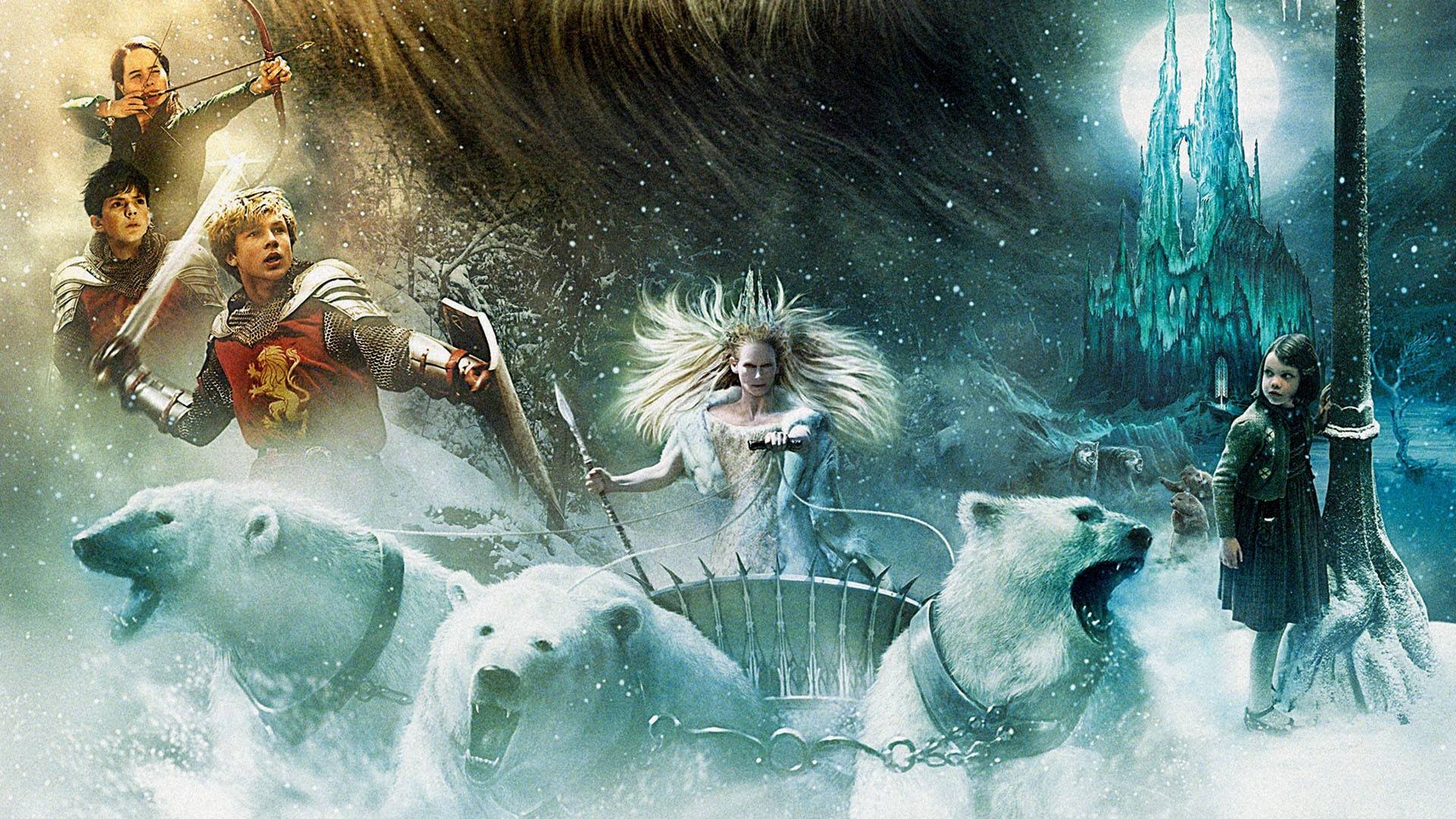The Chronicles of Narnia: The Lion, the Witch and the Wardrobe (2005, Dir. Andrew Admamson):
“Once there were four children whose names were Peter, Susan, Edmund, and Lucy. This story is about something that happened to them …”
… and thus begins the Narnia opus, in the dulcet tones that accommodate the classic bedtime fables. The universal compulsion to tell a tale, the passing of knowledge from old to young, dates as far back as the act of storytelling itself. So, too, is the compulsion to jump on a bandwagon when it makes a bajillion dollars. Star Wars spawned dozens of outer-space imitators. Nirvana gave birth to a multitude of mumbly grunge bands. And The Lord of the Rings — you get the picture.
So now the first of what could be many Narnia films is upon us. Gaze at the broad outlines of The Lion, the Witch and the Wardrobe and you’ll find the plot and character pivots that graced the Rings cycle: innocent travelers in strange lands, the swell of heroism versus the darkest villainy, exotic creatures engaging in grand battles. But the quotation above exemplifies the subtle difference between C.S. Lewis and J.R.R. Tolkien — while both fashioned escapist epics in the shadow of real-life world wars, the latter wanted nothing less than to create a mythology from wholecloth, a society buttressed by chivalric notions and painstakingly-created dialects, while the former simply wanted to tell a few good yarns.
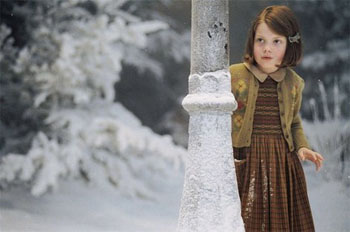 As we all know by now, the Narnia series is more than a yarn, it is Christian allegory with a capital C. But it succeeds because it assuages children’s fantasies and insecurities — it celebrates the simultaneous terror and excitement of being lost in a foreign universe, as well as the comforting knowledge that home, hearth, and normalcy is a twist of a ring or a blunder through a crowded wardrobe away. In Lewis’s world, a cozy cup of tea with a fawn holds as much thrill as doing battle with wicked witches. If one should learn a few understated lessons about Christian charity along the way, so much the better — it’s certainly no worse than other Disney pap that glorifies less sundry precepts (Uncle Remus, anyone?).
As we all know by now, the Narnia series is more than a yarn, it is Christian allegory with a capital C. But it succeeds because it assuages children’s fantasies and insecurities — it celebrates the simultaneous terror and excitement of being lost in a foreign universe, as well as the comforting knowledge that home, hearth, and normalcy is a twist of a ring or a blunder through a crowded wardrobe away. In Lewis’s world, a cozy cup of tea with a fawn holds as much thrill as doing battle with wicked witches. If one should learn a few understated lessons about Christian charity along the way, so much the better — it’s certainly no worse than other Disney pap that glorifies less sundry precepts (Uncle Remus, anyone?).
Directed by Andrew Adamson (Shrek), The Lion, the Witch and the Wardrobe has a heavy brief to fulfill; not only must it satisfy the followers of the Lewis books, but it must also slake the thirst of filmgoers who have become accustomed to a certain brand of fantasy — that is, Peter Jackson’s mammoth take on Tolkien. The resulting product is rife with these tensions. On the one hand, it attempts to capture much of the spirit of the original, down to its modest tale-by-the-fire vibe. On the other, there is plenty of digital legerdemain in evidence, and much of the noisy action (scored with sturm-und-drang strings and chorales, of course) that typified Rings. Oh, and the New Zealand filming locations, too.
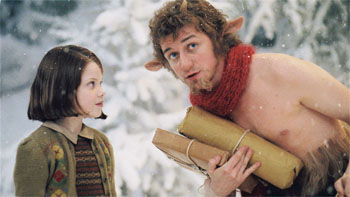 The movie is a close retelling of the book, and Lewis shines through most clearly in the film’s first and second acts, wherein young Lucy (Georgie Hensley) and Edmund (Skandar Keynes) find their way through that magical wardrobe into Narnia. Adamson relies only on a smattering of special effects in these passages; more important are the looks of wonder on his child actors’ faces, how the snowy woods are as real as any snowy woods one might find anywhere. In an age where every mystical land is represented in motion pictures by heavily-doctored CGI, this is a brave choice, and one that pays off for the most part. While we catch the sparkle of amazement and fun in Lucy’s eyes, we also watch approvingly as Edmund, the needy and neglected younger brother, finds his soul mate in the White Witch (Tilda Swinton), who baits him with promises of Turkish delight and princely power. Here we have the classic conundrums of a children’s story: the pull of dreams and imagined places, the temptations and decisions. Swinton invests her villain with brittle sensitivity — she may be a wrong one, but she’s a wrong one attuned to others’ needs and weaknesses — and her confrontations with Edmund provide the film with its dramatic bite. Adamson directs all this with a light, almost breezy touch, and it’s a perfect antidote to all the teeth-gritting misery that permeates most modern epics.
The movie is a close retelling of the book, and Lewis shines through most clearly in the film’s first and second acts, wherein young Lucy (Georgie Hensley) and Edmund (Skandar Keynes) find their way through that magical wardrobe into Narnia. Adamson relies only on a smattering of special effects in these passages; more important are the looks of wonder on his child actors’ faces, how the snowy woods are as real as any snowy woods one might find anywhere. In an age where every mystical land is represented in motion pictures by heavily-doctored CGI, this is a brave choice, and one that pays off for the most part. While we catch the sparkle of amazement and fun in Lucy’s eyes, we also watch approvingly as Edmund, the needy and neglected younger brother, finds his soul mate in the White Witch (Tilda Swinton), who baits him with promises of Turkish delight and princely power. Here we have the classic conundrums of a children’s story: the pull of dreams and imagined places, the temptations and decisions. Swinton invests her villain with brittle sensitivity — she may be a wrong one, but she’s a wrong one attuned to others’ needs and weaknesses — and her confrontations with Edmund provide the film with its dramatic bite. Adamson directs all this with a light, almost breezy touch, and it’s a perfect antidote to all the teeth-gritting misery that permeates most modern epics.
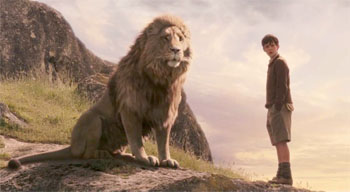 As soon as older siblings Susan (Anna Popplewell) and Peter (William Moseley) step into Narnia, however, the narrative’s dramatic focus dissipates — a flaw also present in the novel. Peter and Susan are functional but uninteresting protagonists, which just goes to show that “fallen” characters like Edmund have more pull than virtuous leading gentlemen and ladies. As the plot grows swollen with chases, encounters with mystical creatures (including Jesus — um, I mean, Aslan the heroic CGI lion (played by Liam Neeson, who really needs a break from these “older mentor” roles)), and a flash of a final battle between light and dark that is over almost as soon as it begins, the effects also switch into overdrive. They wobble between seamless (the talking wolves who hunt the children), charmingly corny (the beaver couple who aid our heroes, voiced by Ray Winstone and Dawn French), and plain unconvincing (many of the locales and lesser beasts). More problematic is the glossing over of much of the book’s lore, the intricacies of deep magic and deep magic from before the dawn of time. Lacking the grace notes of fancies like these to hold onto, we’re left with another grim countdown to another clash of the armies. The filmmakers may be suffering from Ring fatigue, as we all are — after the exhausting battles and exhaustive locales we were exposed to in Jackson’s cycle, could Adamson have hoped to compete? He gives it a game try, but without the maniac intensity that Jackson invested in his climaxes, he doesn’t stand a chance.
As soon as older siblings Susan (Anna Popplewell) and Peter (William Moseley) step into Narnia, however, the narrative’s dramatic focus dissipates — a flaw also present in the novel. Peter and Susan are functional but uninteresting protagonists, which just goes to show that “fallen” characters like Edmund have more pull than virtuous leading gentlemen and ladies. As the plot grows swollen with chases, encounters with mystical creatures (including Jesus — um, I mean, Aslan the heroic CGI lion (played by Liam Neeson, who really needs a break from these “older mentor” roles)), and a flash of a final battle between light and dark that is over almost as soon as it begins, the effects also switch into overdrive. They wobble between seamless (the talking wolves who hunt the children), charmingly corny (the beaver couple who aid our heroes, voiced by Ray Winstone and Dawn French), and plain unconvincing (many of the locales and lesser beasts). More problematic is the glossing over of much of the book’s lore, the intricacies of deep magic and deep magic from before the dawn of time. Lacking the grace notes of fancies like these to hold onto, we’re left with another grim countdown to another clash of the armies. The filmmakers may be suffering from Ring fatigue, as we all are — after the exhausting battles and exhaustive locales we were exposed to in Jackson’s cycle, could Adamson have hoped to compete? He gives it a game try, but without the maniac intensity that Jackson invested in his climaxes, he doesn’t stand a chance.
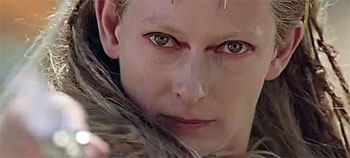 Fortunately, the conclusion of this particular tale is bliss on a modest scale. After spending their adolescence in Narnia, the four children (now mature princes and princesses of the realm) wander into the woods, and stumble out of the wardrobe, reduced to their original young selves. It’s a narrative fillip that has been stolen by many other stories (even Star Trek: The Next Generation), but it still retains its power, especially when the stunned children receive a final gentle warning by fey professor Kirke (an underused Jim Broadbent). Strange that the image of four bewildered children falling out of a wardrobe and getting lectured by a grown-up holds more sway than a multitude of talking animals doing battle, but such is the pull of a good yarn, and C.S. Lewis knew it — if this film is the progenitor of a new fantasy franchise, Disney would do well to note the same.
Fortunately, the conclusion of this particular tale is bliss on a modest scale. After spending their adolescence in Narnia, the four children (now mature princes and princesses of the realm) wander into the woods, and stumble out of the wardrobe, reduced to their original young selves. It’s a narrative fillip that has been stolen by many other stories (even Star Trek: The Next Generation), but it still retains its power, especially when the stunned children receive a final gentle warning by fey professor Kirke (an underused Jim Broadbent). Strange that the image of four bewildered children falling out of a wardrobe and getting lectured by a grown-up holds more sway than a multitude of talking animals doing battle, but such is the pull of a good yarn, and C.S. Lewis knew it — if this film is the progenitor of a new fantasy franchise, Disney would do well to note the same.

